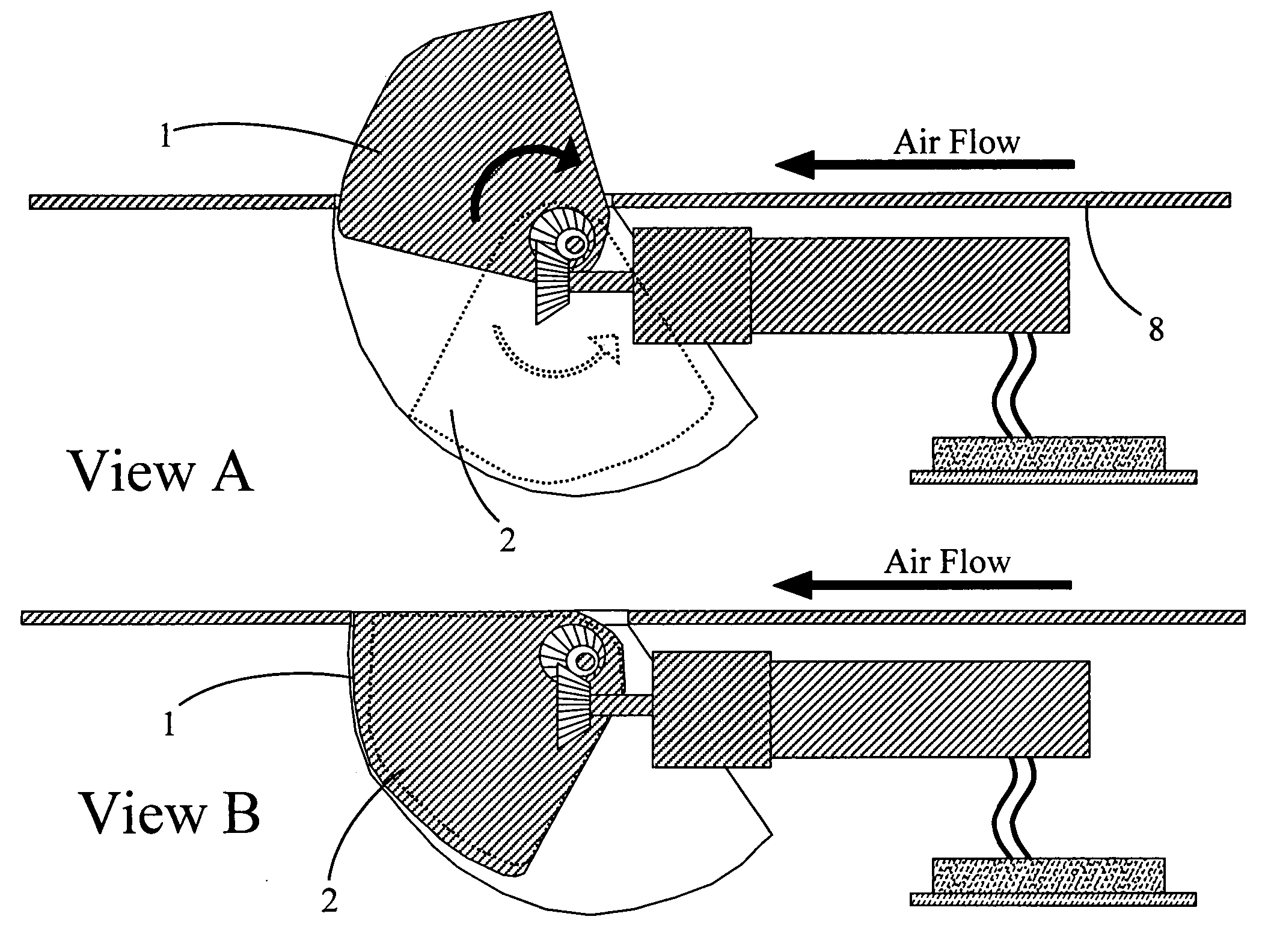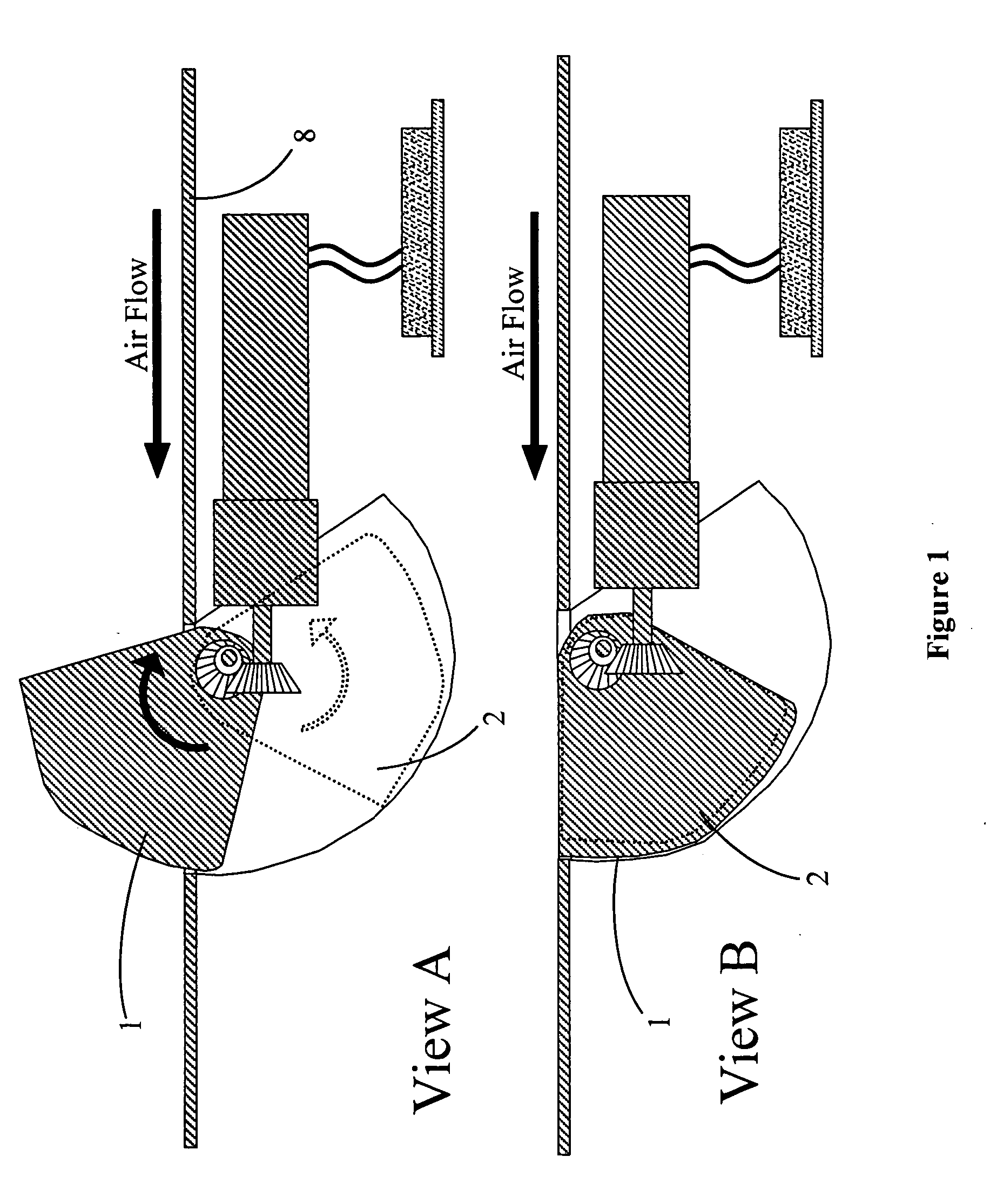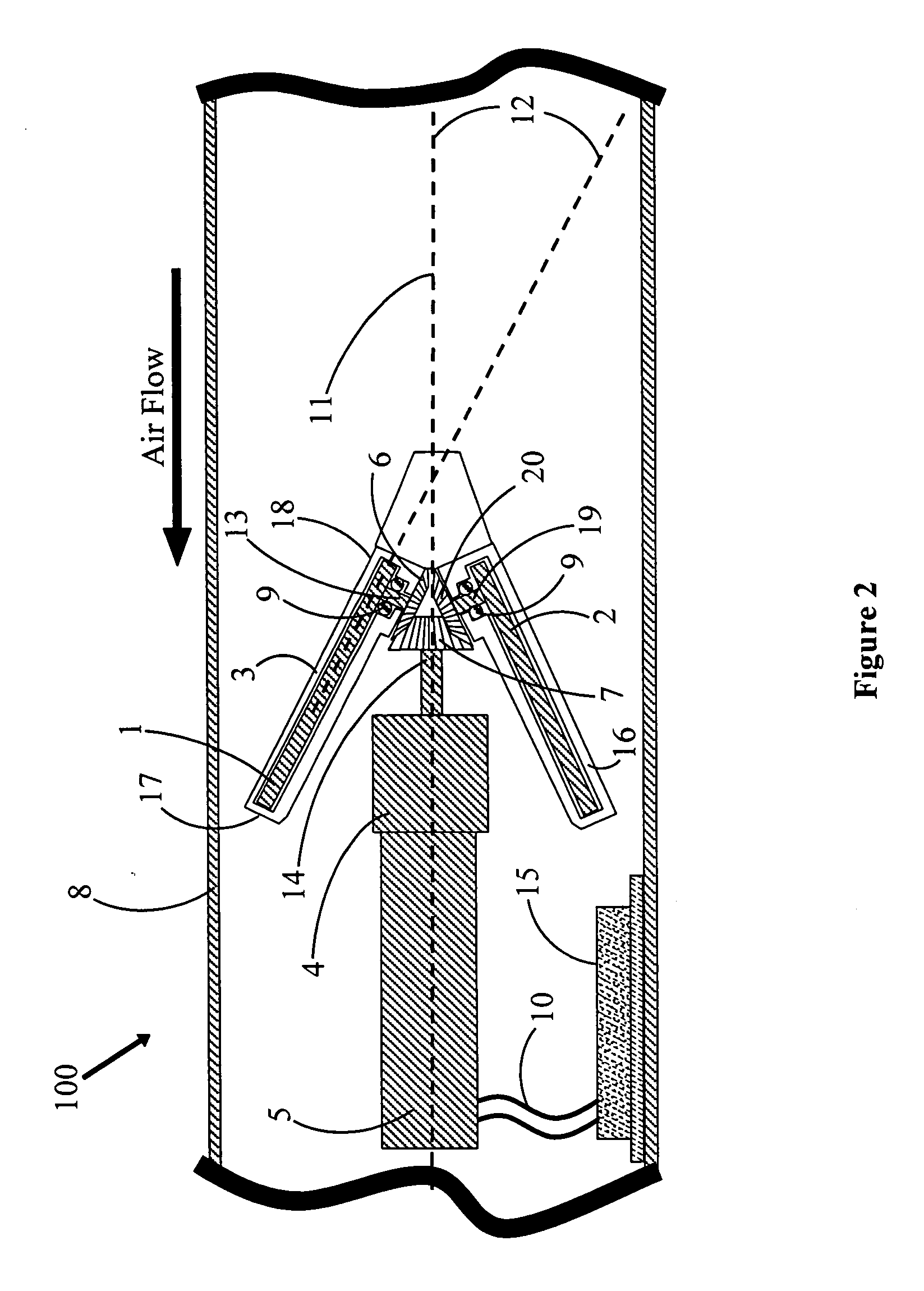Dragless flight control system for flying objects
a flight control and flying object technology, applied in the direction of airflow influencers, weapons, transportation and packaging, etc., can solve the problems of large control force of canard control, major limitations of this type of control, and consequential limited control authority, so as to reduce the total power loss and minimize drag
- Summary
- Abstract
- Description
- Claims
- Application Information
AI Technical Summary
Benefits of technology
Problems solved by technology
Method used
Image
Examples
Embodiment Construction
[0012] Referring now to the drawing wherein like numbers represent like parts in each of the several figures, the structure and operation of the DFCS is explained.
[0013] A typical flying object in which the DFCS may be employed is missile 100 having body axis 11 that is parallel with the length of the missile and a guidance computer (which may or may not be integral with controller 15) that, as a part of its guidance function, issues command signals for the desired rotational positions of fins 1 and 2. The two fins of a pair are mounted to rest in their respective housings 3 and 16 that are positioned to be on the same side of missile body axis 11. The housings are mirrored on that side with axis 11 between them and are recessed into the body of the missile. Each of the fins has front end 18 and back end 17. In the preferred embodiment of DFCS as depicted in FIG. 2, the front ends of the fins are closer together than the back ends of the fins. When no lift effect is desired for the...
PUM
 Login to View More
Login to View More Abstract
Description
Claims
Application Information
 Login to View More
Login to View More - R&D
- Intellectual Property
- Life Sciences
- Materials
- Tech Scout
- Unparalleled Data Quality
- Higher Quality Content
- 60% Fewer Hallucinations
Browse by: Latest US Patents, China's latest patents, Technical Efficacy Thesaurus, Application Domain, Technology Topic, Popular Technical Reports.
© 2025 PatSnap. All rights reserved.Legal|Privacy policy|Modern Slavery Act Transparency Statement|Sitemap|About US| Contact US: help@patsnap.com



